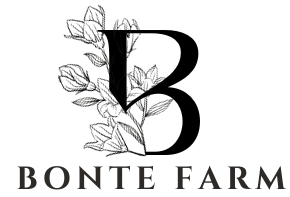Bonte Farm
Euphorbia limbii: A Striking Succulent for Arid Landscapes
Euphorbia limbii: A Striking Succulent for Arid Landscapes
Couldn't load pickup availability
Euphorbia limbii: A Unique Succulent for Your Collection
Euphorbia limbii is a fascinating succulent prized for its unusual appearance and ease of care. Its unique growth habit and intriguing textures make it a standout addition to any succulent collection or xeric landscape.
Intriguing Texture and Architectural Form
- Distinctive Growth Habit: Euphorbia limbii forms a dense, rounded or cushion-like clump of short, fleshy stems. These stems are covered in small tubercles, giving the plant a textured, almost bumpy appearance.
- Minimalist Aesthetic: Unlike many flowering succulents, Euphorbia limbii's primary appeal is its sculptural form and interesting surface. It produces small, inconspicuous flowers that do not detract from its overall aesthetic.
Botanical Characteristics:
- Scientific Name: Euphorbia limbii
- Common Name: No widely recognized common name.
- Growth Habit: Low-growing, clumping succulent.
- Foliage: The stems themselves are the primary photosynthetic organs, appearing green to grayish-green, often tinged with purple or reddish hues in strong sunlight.
- Mature Size: Typically reaches 4-6 inches (10-15 cm) in height and 6-12 inches (15-30 cm) in diameter, forming a dense mound over time.
- USDA Hardiness Zones: 9-11. Euphorbia limbii prefers warm climates and is not frost-hardy. It can tolerate brief periods of cool temperatures but should be protected from freezing conditions.
Cultivation and Care:
- Sunlight: Thrives in full sun to partial shade. In extremely hot climates, some afternoon shade is beneficial to prevent sunburn. Adequate sunlight is essential for maintaining its compact growth habit and vibrant coloration.
- Soil: Requires well-draining soil. A cactus or succulent potting mix is ideal. Amend regular potting soil with perlite, pumice, or coarse sand to improve drainage. Avoid soils that retain excessive moisture.
- Water: Water sparingly, allowing the soil to dry out completely between waterings. Overwatering is a common cause of root rot in Euphorbia species. During the active growing season (spring and summer), water more frequently, but always ensure proper drainage. Reduce watering significantly during the dormant winter months.
- Fertilizer: Generally does not require frequent fertilization. If desired, a diluted balanced liquid fertilizer can be applied during the growing season (spring and summer) once or twice. Avoid over-fertilizing, as this can lead to weak growth.
- Temperature: Prefers warm temperatures and is sensitive to frost. Protect from freezing temperatures.
Landscape Use:
- Rock Gardens: Its low-growing, clumping habit makes it an excellent choice for rock gardens, where its unique texture contrasts beautifully with other succulents and rocks.
- Container Gardens: Thrives in containers, making it suitable for patios, balconies, and indoor spaces with sufficient sunlight.
- Xeriscaping: Ideal for dry, arid landscapes and xeriscaping projects, where its drought tolerance is a valuable asset.
- Ground Cover (Small Areas): Can be used as a ground cover in small, well-drained areas.
Wildlife Attraction:
While Euphorbia limbii's flowers are not particularly showy, they may attract small pollinators. However, its primary value in the landscape is ornamental.
Pest and Disease Resistance:
Euphorbia limbii is generally resistant to most pests and diseases when grown in proper conditions. Overwatering and poor drainage can lead to root rot, which is the primary concern. Mealybugs and scale insects may occasionally be a problem, but they can be controlled with insecticidal soap or by hand removal. The milky sap of Euphorbia species can be irritating to skin and eyes, so caution should be exercised when handling the plant.
Propagation:
- Cuttings: The easiest method of propagation is by stem cuttings. Allow the cut end to callus for several days before planting in well-draining soil. Rooting hormone can be used to improve success rates.
- Offsets: Mature plants may produce offsets (small plantlets) that can be carefully separated and planted.
Incorporating Euphorbia limbii into Your Landscape:
When incorporating Euphorbia limbii into your landscape, ensure well-draining soil and adequate sunlight. Avoid planting in areas that receive excessive moisture. Its unique texture and form make it a striking addition to any succulent or xeric garden.
Relevant Keywords: Euphorbia limbii, succulent, drought-tolerant, rock garden plant, container plant, xeriscape, low-maintenance, clumping succulent, unique succulent, cactus, well-draining soil, full sun, partial shade, USDA zone 9, USDA zone 10, USDA zone 11, stem cuttings, offset propagation.
Share




